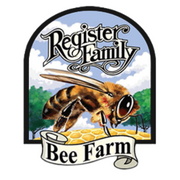
Bees are a crucial part of many ecosystems all over the world. Apart from being central to honey production, bees are the most numerous and widespread pollinators on the planet, spurring the growth of a wide range of flowering plants and fruits. Unfortunately, these hard-working insects are threatened in many areas, leading to fears that extinction may be on the horizon. Here’s a closer look at this threat and what can be done about it.
How Honeybees Are Threatened
Bee populations have declined by over 40% since the mid-20th century, with Europe and North America being the hardest-hit regions. There are multiple reasons for this decline.
- Habitat loss: As human settlements, industry, and farms expand, vital living space is closed off to bee populations, killing present colonies and leaving less space for new ones to develop.
- Climate change: Extreme temperatures resulting from climate change disrupt bees’ normal life cycles, migration patterns, and mating habits.
- Pesticide use: Although pesticides have proven effective in protecting crops, they also harm bees. Insecticides and herbicides can target both bees and the plants they depend on for food.
- Invasive species: As bee colonies are exposed to parasites like varroa mites, which can cause disease and weaken immune systems, they’re also left vulnerable to predators like the Asian giant hornet or native wasps.
Why Bees Need Protection
Bees are the most widespread and effective pollinators on the planet, helping plants reproduce and flourish, including many food crops humans rely on. They support the growth of 87 of the world’s top food crops simply by carrying pollen. This means that without bees, global food shortages are all but assured.
Furthermore, bees pollinate many wild plants, including shrubs, trees, creepers, and wildflowers. Not only does this support varied plant life, but it also strengthens food sources and habitats for a wide range of other animals. Bees also produce honey, a key food source for bears, skunks, and other insects.
What Can Be Done
 Fortunately, there are several simple methods for protecting and restoring bee populations. These include rewilding land, reducing pesticide use, and providing safe habitats for colonies.
Fortunately, there are several simple methods for protecting and restoring bee populations. These include rewilding land, reducing pesticide use, and providing safe habitats for colonies.
Rewilding can be as simple as planting bee-friendly flowers like hyacinths, echinacea, or zinnias. These will provide a reliable food source for them while beautifying your home. Use natural pesticides like neem oil, Epsom salt, or vinegar to discourage invasive insects without harming bees.
Additionally, local bee farmers provide safe habitats and room for reproduction to bee populations. Supporting local beekeepers will help ensure the protection of thriving bee colonies. If we all work together in the years to come, we can restore these vital insects to our ecosystems.
Protecting honeybees begins with natural, local beekeepers like Register Family Farm in Freeport, FL. This family-owned and -operated farm is proud to offer rich Tupelo honey, beeswax products, and gift baskets produced with the help of 1,200 colonies of happy, healthy bees. To learn more about what they have to offer, visit them online or call (850) 392-7404.
About the Business
Have a question? Ask the experts!
Send your question

